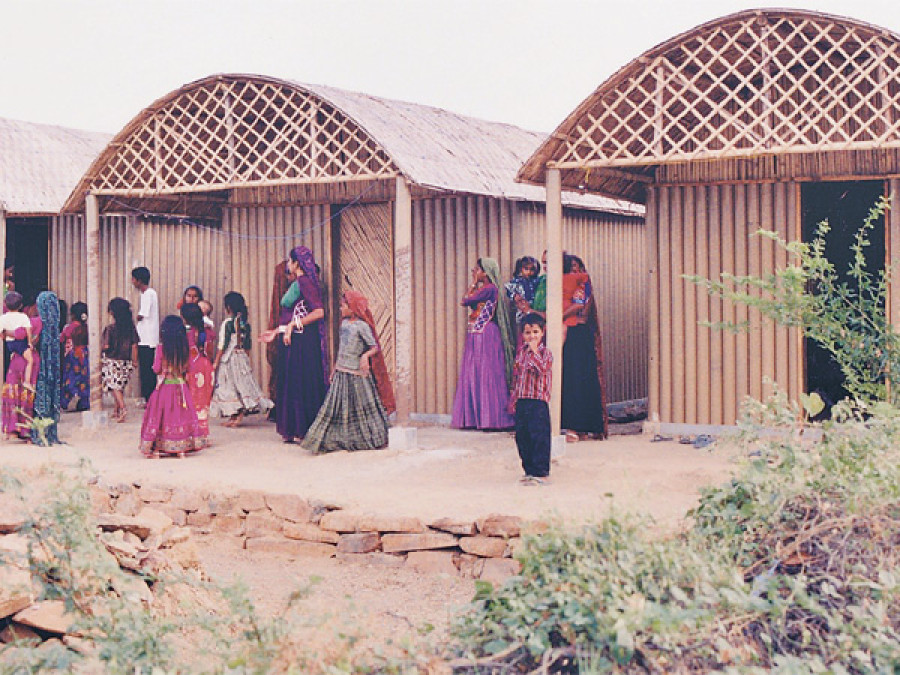Miscellaneous
Rebuilding Sustainably
It has been six weeks or so since the first earthquake, and while relief efforts are slowly winding down from the frenetic
Sophia Pande
Providing food, shelter, clean water, proper sanitation for every day practices, prevention of water born epidemics over the monsoon period, restarting schools so that children may have a semblance of normalcy, these are the looming obstacles that we will face not just in the coming weeks, but in the coming months, and most probably in the coming years.
The statistics are jaw dropping: over 600,000 homes have been destroyed or are damaged and too unstable to live in, 3 million people are homeless as a result. Of these 3 million, many will be displaced over the course of the nearing monsoon, as landslides and rising rivers threaten already vulnerable villages throughout the hardest hit districts like Nuwakot, Sindhupalchok, and Dolakha (to name just a few of the 14 hardest hit).
All over the world, the biggest dangers after natural disasters, is that hastily built temporary structures, which are crucial to shelter people from the elements, will become slum-like permanent homes for the poorest and most dependent communities who do not have the will or the means to build for themselves or relocate sustainably due to lack of personal resources. At times like these, it falls to the government to properly assess medium- and long-term rebuilding so that entire communities do not become quagmires of extreme poverty, living in abject circumstances and mired in existential apathy that would be a direct result of the state’s turning a blind eye to their right to basic, dignified living environments.
Already Temporary Learning Centres (TLCs) mandated by the government as a stopgap during the monsoon—so that schools may restart—are being built across affected villages by various national and international organisations. These TLCs are the best we can do at the moment, however, they cannot and must not be allowed to endure past the rainy season, children cannot be left to learn at the mercy of tin roofs, tarpaulins, and uncured bamboo structures, which are admittedly a necessary evil in a time of desperate need. If proper schools are left un-built, what hope do we have for the resurrection of entire villages?
As we struggle as a nation to identify the best methods, materials, and structures with which to rebuild, it is fortuitous to have had the unexpected but very welcome visit of one of the world’s foremost architects, Shigeru Ban, a soft–spoken, oddly humourous, self-effacing Japanese man who has travelled the world to build temporary shelters for those affected by disasters, natural and man-made.
Perhaps the most striking points made during Ban’s presentation—held in Hyatt Regency—was his debunking of the “temporary” and “permanent” categories, when it comes to buildings. As he very practically put it, these terms are arbitrary since structures very clearly intended to last can indeed collapse, just as post disasters shelters, if made with care and with sensitivity to practicality, community aesthetics, and environment, can endure perfectly well over decades.
The evolution of architecture has always been driven by the will of the powerful and of the rich who desire to create monuments and statement buildings to encase their power. However, Ban’s personal interests lay, as should that of every humanist, in creating beautiful, ecological buildings even for the very poor, for why should beautiful man-made structures be only the privilege of the wealthy? Perhaps it seems frivolous, in such a time of crisis, to be arguing about or even pointing out that when we rebuild, it should be with a mind towards aesthetics, the environment, and sustainability. After all, shelter is shelter. However, that kind of utilitarian argument is moot when one realises that in fact, if we put in the work, as so many young, self-motivated groups (who are sadly too many to name in this piece) are doing, then we can indeed start to rebuild with sustainable materials, using structures and locally available materials that will withstand the brunt of monsoons, heavy winds, and yes, even massive earthquakes.
However, there is a problem. The rebuilding of communities and entire villages cannot just lie in the hands of well-meaning disparate groups of people, and competing organisations who dictate what “shelter” should mean. Without government buy in, active state support, and enormous amounts of funding, these energetic groups, most of whom have made their building plans open source, and have conceived and executed clever, economical structures, cannot afford to roll out these building at the high volume required to really make a difference in the rebuilding process.
While local government, individuals, NGOs and INGOs already see the need for this kind of attentive rebuilding, the government must step forward and lend its clout in steering rebuilding towards ecological and sustainable ends, and to ensure that ideas are heard, materials are made available at reasonable prices, and rebuilding does not suffer at the hands of infighting as the state struggles to allocate its much needed funds.




 13.12°C Kathmandu
13.12°C Kathmandu










